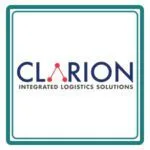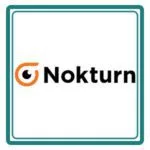Enhancing Workplace Safety: Setting Effective OHS Objectives and Achieving Compliance with ISO 45001

Creating a safe and healthy work environment is a top priority for organizations worldwide. The Occupational Health and Safety Assessment Series (OHSAS) has long been a trusted framework for managing workplace risks and improving safety performance. However, with the introduction of ISO 45001, businesses now have access to a more robust and internationally recognized standard that emphasizes risk management, employee involvement, and continuous improvement.
In this blog, we’ll explore how to set effective workplace safety objectives, align them with legal requirements, and implement actionable plans to achieve compliance. Whether you’re looking to reduce workplace accidents, improve safety systems, or ensure legal adherence, this guide will help you create a safer and more productive workplace.
The Importance of Setting Clear Safety Goals
Effective workplace safety starts with clear, measurable objectives. These goals should not only align with your organization’s safety policies but also focus on preventing injuries, complying with regulations, and fostering a culture of continuous improvement.
What Makes a Good Safety Objective?
- Measurable: Goals should be quantifiable, such as reducing workplace accidents by 15% within a year.
- Aligned with Policies: Objectives must reflect the company’s commitment to safety.
- Preventive: Focus on preventing incidents rather than just reacting to them.
- Compliant: Ensure goals meet local and international safety standards.
- Continuous: Safety is an ongoing process, not a one-time effort.
By setting clear safety goals, businesses can reduce accidents, improve employee well-being, and demonstrate their commitment to workplace safety.
How to Set SMART Workplace Safety Goals
To ensure your safety objectives are effective, use the SMART criteria:
- Specific: Clearly define what you want to achieve.
- Measurable: Use data to track progress.
- Achievable: Set realistic goals based on available resources.
- Relevant: Align goals with workplace risks and priorities.
- Time-bound: Set a deadline for achieving the goal.
- Example: Reducing Slip-and-Fall Incidents
- Goal: Reduce slip-and-fall incidents by 25% within 12 months.
Types Of Certification
- ISO Certification
- ISO 9001 Certification
- ISO 14001 Certification
- ISO 45001 Certification
- ISO 22000 Certification
- ISO 27001 Certification
- ISO 17025 Certification
- ISO 13485 Certification
- ISO 20000-1 Certification
- ISO 22301 Certification
- ISO 50001 Certification
- ISO 37001 Certification
- IATF 16949 Certification
- ISO 29001 Certification
- ISO 31000 Certification
- ISO 20121 Certification
- ISO 10002 Certification
- ISO 41001 Certification
Get Free Consultation
Our Clients


















Action Plan:
- Identify High-Risk Areas: Conduct workplace inspections to pinpoint hazardous zones.
- Improve Flooring and Signage: Install non-slip mats, repair damaged floors, and add warning signs.
- Train Employees: Educate staff on proper footwear, spill cleanup, and safe work practices.
- Monitor Progress: Conduct monthly safety checks and track incident reports.
- Review and Adjust: Evaluate the program’s effectiveness after six months and make necessary adjustments.
Examples of Workplace Safety Objectives
Here are some common OHS objectives that organizations can implement:
- Reduce Workplace Risks: Identify and mitigate hazards like faulty equipment or chemical exposure.
- Improve Safety Systems: Introduce new tools, processes, or training programs to enhance safety management.
- Enhance Existing Measures: Strengthen current safety protocols, such as emergency evacuation procedures.
- Prevent Recurring Incidents: Address repetitive accidents by implementing targeted solutions.
- Ensure Legal Compliance: Stay updated with safety regulations and adjust policies accordingly.
Key Areas Auditors Focus On
During a safety review, auditors evaluate several critical areas to ensure compliance and effectiveness:
- Inclusion of OHS Objectives: Are all safety goals integrated into the management system?
- Focus on Continuous Improvement: Are objectives designed to improve safety performance over time?
- Employee Awareness: Do workers understand their role in achieving safety goals?
- Legal Compliance: Are objectives aligned with legal requirements?
- Addressing Significant Risks: Are major hazards identified and addressed?
Conclusion:
Workplace safety is not just about compliance—it’s about creating a culture of care and responsibility. By setting clear, measurable safety objectives and aligning them with standards like ISO 45001, organizations can reduce risks, prevent accidents, and foster a healthier work environment.
Regular reviews, employee training, and effective communication are key to achieving these goals. For more insights on workplace safety and compliance, visit our website or explore our resources on ISO 45001. Remember, a safe workplace is the foundation of a thriving business.
GET A FREE CONSULTATION NOW
FAQ
What is the difference between OHSAS 18001 and ISO 45001?
OHSAS 18001 was the previous standard for occupational health and safety management, while ISO 45001 is its updated replacement. ISO 45001 places greater emphasis on risk management, employee involvement, and continuous improvement.
Why are SMART goals important for workplace safety?
SMART (Specific, Measurable, Achievable, Relevant, Time-bound) goals help organizations set clear, actionable safety objectives. They ensure goals are realistic, trackable, and aligned with workplace prioritiesFull implementation frequently requires between 4 to 12 weeks of training, documentation, and audit activities regardless of company size and complexity.
How can businesses ensure compliance with safety regulations?
Businesses should regularly monitor legal updates, conduct workplace inspections, train employees, and maintain proper documentation. Staying informed and proactive is key to meeting safety standards and avoiding penalties.
